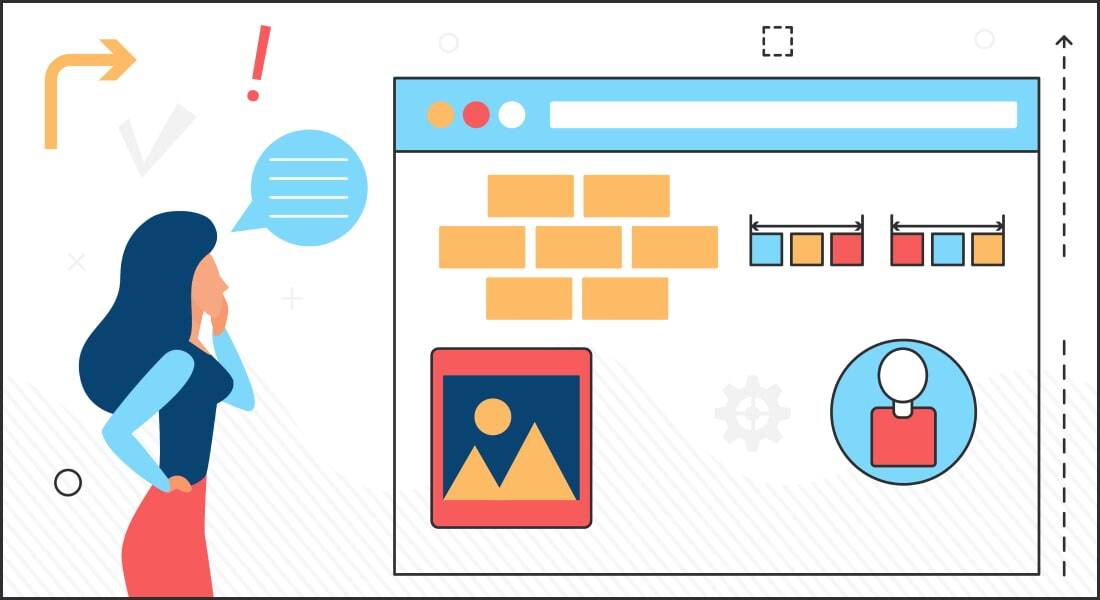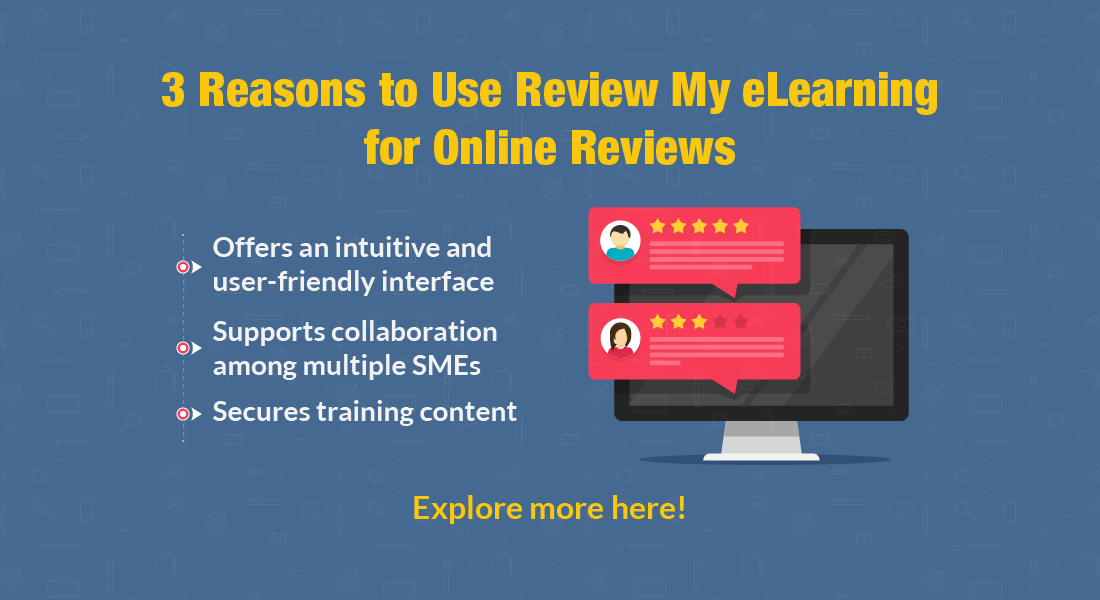Elevate Engagement! How Interactive eLearning Prototypes Transform Training

Who doesn’t like to catch a glimpse of how their wedding suit or gown would look, once stitched, or for that matter how would their dream house appear, once built? No wonder you are keen to get your hands on the design catalog and the blueprint respectively to quench your quest. Similar is the case with eLearning courses. A peep into how the final output will look intrigues all stakeholders. Right? As an instructional designer, you must be curious to visualize what your eLearning courses would look like, and whether the interactivities and assessments will function as desired. This is where interactive eLearning prototypes come into play! An interactive prototype— a working example of an eLearning course, offers you a sneak peek at the actual eLearning course.
Let's delve deeper into the realm of eLearning prototypes, understanding what they are, how they differ from storyboards, why they are essential, the various types available, and how they can elevate your eLearning initiatives.
Why Should You Create an eLearning Prototype?
Here are a few compelling reasons:
- User experience optimization
- Early stakeholder feedback
- Iterative design process
- Visualizing complex interactions
- Reduced development costs
Read on for a deeper dive!
What is an eLearning Prototype?
An eLearning prototype is a mockup or simulation of an eLearning course, typically created during the design phase. It serves as a visual representation of the final product, showcasing the layout, interactions, and functionality of the course. It is developed to test the course for various design and technical aspects. It gives you a hang of the elements such as the look and feel of the course, navigation, interactivities, assessments, and LMS compatibility. Prototypes can range from low-fidelity wireframes to high-fidelity interactive simulations, depending on the stage of development and the level of detail required.

How is a Prototype Different from a Storyboard?
While both prototypes and storyboards are essential tools in eLearning development, they serve distinct purposes. A storyboard is a static visual representation of the course structure, outlining the sequence of content, interactions, and assessments. On the other hand, a prototype goes a step further by providing an interactive simulation of the course, allowing stakeholders to experience the flow and functionality firsthand.
→ Download eBook: Instructional Design Strategies for Learner-Centric eLearning
Why Should You Create an eLearning Prototype?
User Experience Optimization
When developing eLearning courses, ensuring a seamless and intuitive user experience is paramount. Prototypes play a pivotal role in achieving this by allowing designers and developers to test various aspects of the user journey. This includes assessing the navigation flow within the course, testing interactive elements such as quizzes or simulations, and refining feedback mechanisms such as progress tracking or performance feedback. By gathering feedback from users interacting with the prototype, teams can identify pain points, usability issues, and areas for improvement. This iterative process of testing and refining ultimately leads to a user experience that is engaging, effective, and conducive to learning.
Early Stakeholder Feedback
In any development project, stakeholder input is crucial for success. Prototypes serve as tangible representations of the eLearning course, making it easier for stakeholders to provide meaningful feedback. By sharing prototypes with stakeholders early in the development process, teams can ensure alignment with expectations and objectives. Stakeholders, including subject matter experts, instructional designers, and project sponsors, can evaluate the course structure, content presentation, and interactive elements within the prototype. This early feedback loop fosters collaboration, minimizes misunderstandings, and sets the course on the right track from the outset.
Iterative Design Process
The iterative design process facilitated by prototypes is a cornerstone of effective eLearning development. Rather than finalizing all course elements upfront, teams can create prototypes and iterate based on user testing and feedback. This iterative approach allows for continuous improvement, refinement, and optimization of course elements. For example, if user testing reveals that a particular interaction is confusing or ineffective, designers can iterate on that specific element without disrupting the entire course development process. This agility and responsiveness lead to improved outcomes, as the course evolves based on real-world usage and feedback.
Visualizing Complex Interactions
Modern interactive eLearning courses often include complex interactions such as simulations, branching scenarios, and gamified elements. Prototypes provide a platform to visualize and refine these interactions before full-scale development. Designers can create interactive prototypes that simulate realistic scenarios, allowing users to engage with the course content in a meaningful way. This not only helps in identifying technical challenges or usability issues but also enables stakeholders to better understand how these complex interactions will function in the final course. Visualizing and refining these interactions early on streamline the development process and ensure a cohesive and immersive learning experience.
Reduced Development Costs
One of the significant benefits of creating eLearning prototypes is the potential for cost savings during the development phase. By identifying and addressing issues early in the prototyping stage, teams can avoid costly rework and revisions later on. For example, if user testing uncovers usability issues or content gaps within the prototype, designers can make the necessary adjustments before investing significant resources in full-scale development. This proactive approach not only reduces development costs but also minimizes project timelines. Additionally, prototypes allow for rapid iteration and incremental improvements, contributing to a more efficient and cost-effective development process overall.
What are the Various Types of Interactive eLearning Prototypes?

1. Wireframe Prototypes
Wireframe prototypes are foundational mockups that focus on the layout and structural elements of an eLearning course. They provide a skeletal framework without detailed design elements, helping designers and stakeholders visualize the course's overall structure and flow.
For example, a wireframe prototype for a compliance training course might include placeholders for content blocks, navigation buttons, and progress indicators. This type of prototype is particularly useful in the early stages of development to outline the course's architecture before delving into design specifics.
2. Clickable Prototypes
Clickable prototypes add basic interactivity to wireframe structures, allowing users to navigate through the course flow and interact with simple elements. These prototypes often use clickable buttons, links, or interactive widgets to simulate user actions.
For instance, a clickable prototype for a customer service training module might allow users to click through different sections such as product knowledge, communication skills, and problem-solving scenarios. Clickable prototypes provide a hands-on experience for stakeholders to test navigation pathways and basic interactions before advancing to more complex elements.
3. Interactive Simulations Prototypes
Interactive simulations take eLearning prototypes to a higher level of fidelity by simulating real-world interactions and scenarios. These prototypes replicate software applications, equipment operations, or complex processes, offering learners a hands-on learning experience.
For example, a healthcare training course might include an interactive simulation of a patient management system where learners can practice entering patient data, scheduling appointments, and accessing medical records. Interactive simulations immerse learners in realistic scenarios, enhancing engagement, retention, and skill development.
4. Gamified Prototypes
Gamification prototypes leverage game elements such as points, levels, badges, and rewards to enhance learner engagement and motivation. These prototypes transform traditional eLearning content into interactive and competitive experiences, encouraging learners to progress and achieve goals.
For instance, a sales training course might feature a gamified prototype where learners earn points for completing modules, unlock badges for mastering skills, and compete on leaderboards for recognition. Gamified prototypes tap into intrinsic motivators and behavioral psychology to create immersive and enjoyable learning experiences.
Watch this video for simple yet effective tips to be an expert in training gamification.
5. Branching Scenarios Prototypes
Branching scenario prototypes offer learners the opportunity to make decisions and explore different pathways based on their choices. These prototypes present learners with realistic scenarios and challenge them to apply knowledge and skills to navigate through various outcomes.
For example, a leadership development course might include a branching scenario prototype where learners encounter workplace challenges and must choose between different leadership approaches. Each decision leads to a different consequence, allowing learners to experience the impact of their choices and develop critical thinking and decision-making skills.
And…It’s a Wrap!
In the realm of eLearning, interactive prototypes serve as invaluable assets for creating engaging and effective learning experiences. Embracing the diverse types of interactive prototypes empowers learning designers and developers to craft immersive and impactful eLearning courses that resonate with modern learners. By leveraging prototypes, you can optimize user experience, gather early feedback, streamline development processes, and ultimately elevate the impact of your eLearning initiatives.
There’s more to designing sticky eLearning. Here’s an eBook that walks you through the nuances of powerful instruction design strategies that can level up your eLearning game. Get your exclusive copy now!





